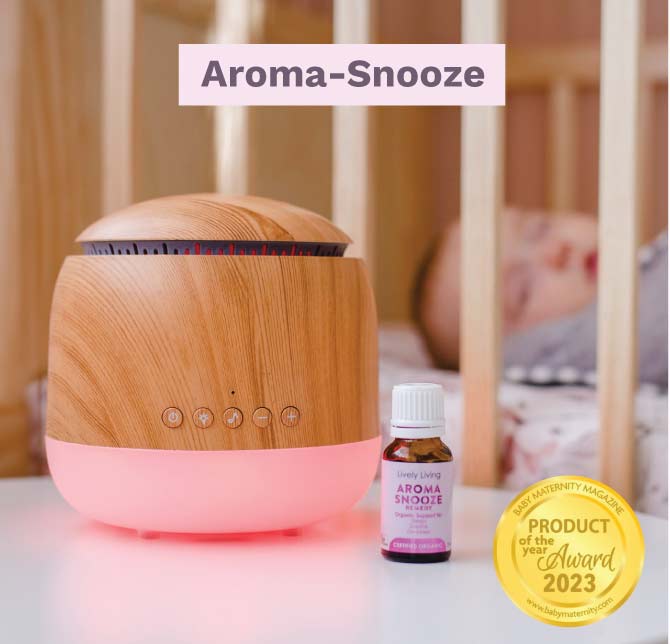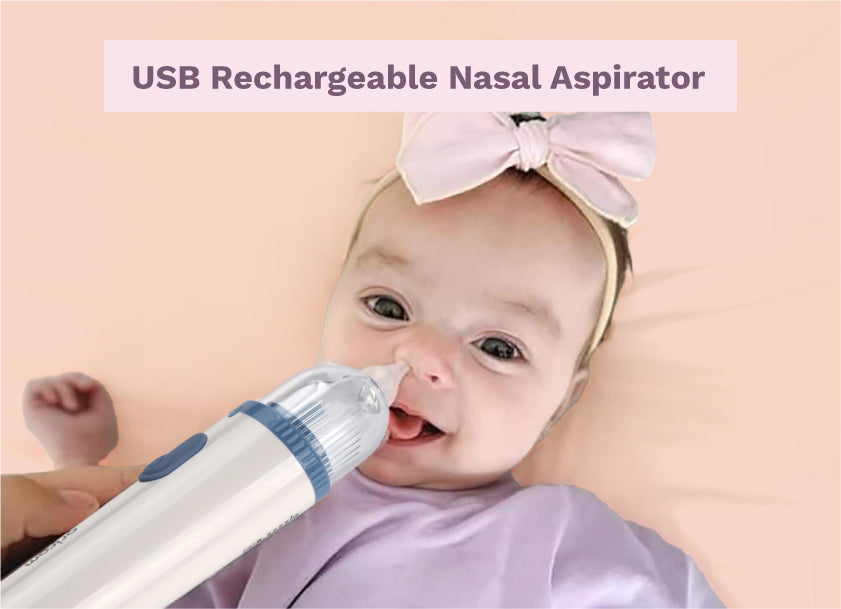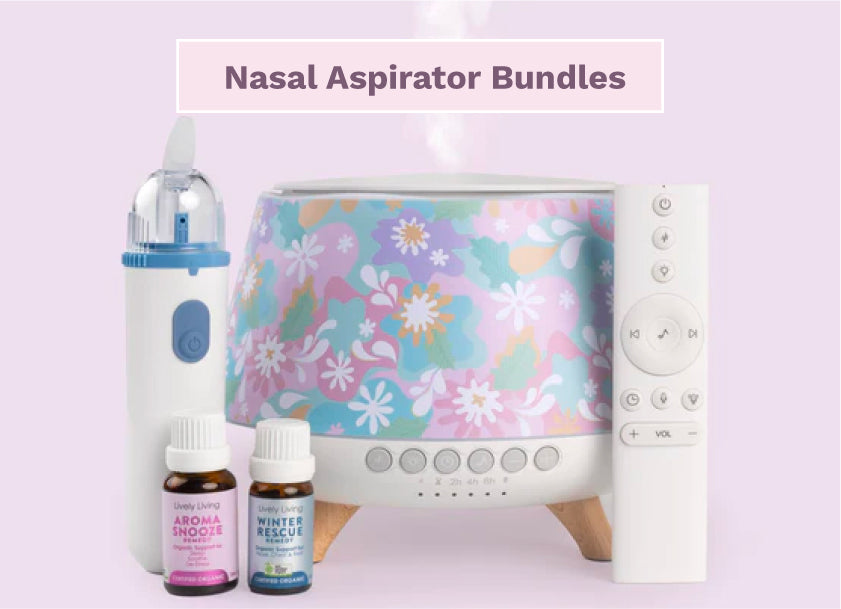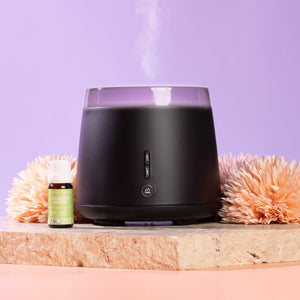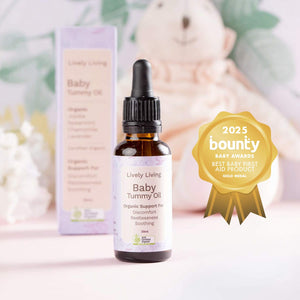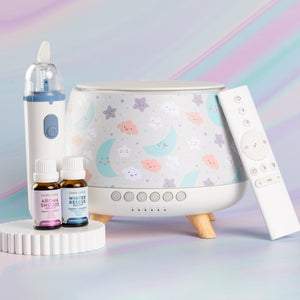A Parent's Guide to Children's Respiratory Health Essentials
It's that cough. Or maybe it's the sniffles that just won't quit. As a parent, your child's every breath can be a source of worry when they're not feeling their best. Understanding how to protect their little lungs is a big job. This is A Parent's Guide to Children's Respiratory Health, intended to help you through it all. We get it; you want straightforward information and practical steps to support your child's breathing and overall child health. This guide, A Parent's Guide to Children's Respiratory Health, is here to give you just that.
Table of Contents:
- Why Little Lungs Need Extra Care
- Common Breathing Troubles in Kids
- When to Call the Doctor: Red Flags
- Creating a Lung-Friendly Home: A Parent's Guide to Children's Respiratory Health
- Caring for a Sick Child at Home
- The Impact of Air Around Them
- A Note on Essential Oils for Children's Breathing
- Working with Your Pediatrician
- Conclusion
Why Little Lungs Need Extra Care
A child's respiratory system is still growing and developing. Their airways are smaller and narrower than an adult's. This means even a little swelling or mucus can cause more breathing trouble for them, sometimes leading to increased work of breathing. Think of it like trying to breathe through a tiny straw versus a big one; any obstruction can significantly impact air entry.
Their immune systems are also learning. A child's immune system hasn't built up defenses against many common germs yet, making them susceptible to various respiratory infections. This makes them more likely to catch colds and other bugs that affect breathing. Plus, children breathe faster than adults, so they can inhale more air pollutants if the air quality isn't great, which can affect their lung health over time.
Common Breathing Troubles in Kids
Many different things can cause your child to cough, sneeze, or feel short of breath. Knowing what's common can help you feel more prepared to handle these respiratory problems.
The Everyday Cold
Ah, the common cold; it feels like a rite of passage for kids. Symptoms usually include a runny nose, sore throat, and mild cough, and sometimes a low-grade fever or general fatigue. Most colds are caused by viruses and just need to run their course, typically lasting a week to ten days. Plenty of rest and fluids are your best friends here to alleviate symptoms and support your child's health. According to the Centers for Disease Control and Prevention (CDC), children can have many colds per year, contributing to common respiratory illnesses.
Influenza (The Flu)
The flu often hits harder than a common cold. Look for sudden onset of fever, body aches, chills, and significant fatigue, along with cough and sore throat; some children might also experience vomiting or diarrhea. The flu can sometimes lead to more serious problems like pneumonia, bronchitis, or ear infections, requiring medical attention. The annual flu vaccine is a highly effective way to protect your child and reduce the severity of illness if they do get sick.
Bronchiolitis
This is a common lung infection in young children and infants, often leading to inflammation and mucus in the small airways (bronchioles). Respiratory Syncytial Virus, or RSV, is a frequent cause of bronchiolitis and can be particularly concerning for very young babies or those with underlying health conditions. Symptoms might start like a cold but can progress to fast breathing, noticeable wheezing, a persistent cough, and increased respiratory effort. The Mayo Clinic offers more details on this condition, which sometimes shares respiratory presentations with asthma bronchiolitis.
Childhood Asthma
Childhood asthma is a chronic respiratory condition where airways swell and narrow. The condition can also cause extra mucus production. This combination leads to common asthma symptoms like wheezing, coughing (especially at night or with exercise), shortness of breath, and chest tightness or chest pain. Asthma triggers vary widely among children but can include allergens (like pollen, dust mites, pet dander), irritants (like smoke from tobacco smoke or air pollutants), respiratory infections, cold air, or even strong emotions. Effectively managing asthma is vital for a child's quality of life.
Working with your doctor or other health professionals to create a comprehensive asthma action plan is very important for asthma care. This plan developed by your healthcare provider will outline daily medications (controllers), how to use quick-relief inhalers, how to recognize worsening asthma symptoms, and what to do during an asthma attack to manage asthma effectively. Consistent adherence to the management plan can significantly improve lung function and reduce the frequency and severity of asthma attacks. Educating young adults with asthma on self-management is also crucial as they transition to more independent health care.
Pneumonia
Pneumonia is an infection that inflames the air sacs in one or both lungs, a serious respiratory illness. The air sacs may fill with fluid or pus, making it hard to breathe and reducing air entry. Symptoms can include a cough (which may produce greenish, yellow, or even bloody mucus), fever, chills, and difficulty breathing or chest pain. Pneumonia can be caused by bacteria, viruses, or fungi, and its severity can range from mild to life-threatening. Bacterial pneumonia often requires antibiotics, while viral pneumonia treatment focuses on supportive care.
Croup
Croup often presents with a distinctive 'barking' cough, similar to the sound of a seal. It's caused by viral swelling around the vocal cords (larynx) and windpipe (trachea). It typically affects younger children, most commonly between 6 months and 3 years of age. Other symptoms can include a hoarse voice, fever, and stridor (a harsh, raspy sound when breathing in). Cool mist or steamy air from a shower can sometimes help ease symptoms by reducing airway inflammation, but always check with your doctor, especially if breathing problems seem severe or there's increased respiratory effort.
Allergies and Breathing
Allergies can certainly impact a child's respiratory health significantly. Things like pollen, dust mites, pet dander, mold spores, or even certain foods can trigger allergy symptoms. These might include a runny nose, sneezing, itchy eyes, and sometimes a cough or wheezing if the allergic reaction affects the respiratory tract. Managing allergies often involves identifying and avoiding triggers as much as possible. Sometimes medications like antihistamines or nasal corticosteroids are needed, and in some cases, allergy shots (immunotherapy) can provide long-term relief. The American College of Allergy, Asthma & Immunology notes the strong link between allergies and asthma, as uncontrolled allergies can worsen asthma symptoms.
Below is a table summarizing some common respiratory conditions in children:
| Condition | Key Symptoms | Common Causes | Important Notes |
|---|---|---|---|
| Common Cold | Runny nose, sore throat, mild cough, sneezing. | Viruses (Rhinoviruses, Coronaviruses) | Usually mild; rest and fluids help alleviate symptoms. |
| Influenza (Flu) | Sudden fever, body aches, chills, fatigue, cough, sore throat. | Influenza viruses | Can lead to serious respiratory problems; annual vaccine recommended. |
| Bronchiolitis | Cold-like symptoms, fast breathing, wheezing, persistent cough. | RSV, other viruses | Affects small airways in infants and young children; can cause significant respiratory effort. |
| Childhood Asthma | Wheezing, cough (especially at night/exercise), chest tightness, shortness of breath. | Airway inflammation, various triggers | A chronic condition requiring ongoing asthma care and an asthma action plan. |
| Pneumonia | Cough (with phlegm), fever, chills, difficulty breathing, chest pain. | Bacteria, viruses, fungi | Infection of the lungs; requires medical attention. |
| Croup | Barking cough, hoarse voice, stridor (noisy breathing). | Viruses | Affects larynx and trachea; common in younger children. |
| Allergies | Runny nose, sneezing, itchy eyes, cough, wheezing (if airways affected). | Pollen, dust mites, pet dander, mold, certain foods. | Can trigger or worsen asthma symptoms; avoidance and medication are key strategies. |
When to Call the Doctor: Red Flags
You know your child best. But some common signs always mean you should seek medical attention quickly for breathing problems. Early intervention can prevent a respiratory condition from becoming more severe.
- Struggling to breathe: This can look like fast breathing, nostrils flaring, the skin pulling in around ribs or at the neck (retractions), an increased work of breathing, or grunting sounds with each breath. This indicates significant respiratory effort.
- Wheezing: A high-pitched whistling sound when breathing out, which can be a sign of narrowed airways.
- High fever: Especially if it doesn't come down with appropriate medicine, if your child is very young (under 3 months with any fever), or if the fever is persistent.
- Persistent cough: A cough that lasts for weeks, seems to be getting worse, produces discolored mucus, or significantly disrupts sleep.
- Blueish color: If their lips, face, or nail beds look blue or grayish, this is an emergency. It means they aren't getting enough oxygen and require urgent medical attention.
- Dehydration: Signs include fewer wet diapers (less than 4 in 24 hours for infants), dry mouth and tongue, no tears when crying, or sunken eyes.
- Very sleepy or hard to wake: If your child is unusually tired, listless, or difficult to arouse.
- Seems very ill or irritable: If your child just isn't themselves, appears much sicker than usual, or is inconsolably irritable.
- Chest pain: Especially if accompanied by other respiratory symptoms or if it's persistent.
Always trust your instincts when it comes to your child's health. If you're worried about their respiratory health or observe any severe respiratory symptoms, it's better to have them checked by a healthcare provider or seek medical care without delay.
Creating a Lung-Friendly Home: A Parent's Guide to Children's Respiratory Health
Your home environment plays a big role in your child's breathing and overall lung health. There are simple, effective ways to make it healthier and reduce risk factors for respiratory problems.
Say No to Smoke
This is a big one. Secondhand smoke, also known as passive smoking, is extremely harmful to children's lungs, which are still developing. Exposure to tobacco smoke can trigger asthma attacks, increase the frequency and severity of respiratory infections like bronchitis and pneumonia, and contribute to the development of lung disease later in life. Make your home and car completely smoke-free environments. If you or someone in your household smokes, get help to quit;
Master Good Hygiene
Teach your children to wash hands often with soap and water for at least 20 seconds. This is especially important after coughing, sneezing, using the restroom, or being in public places. Show them how to cough or sneeze into a tissue or their elbow, not their hands, to prevent spreading germs that cause respiratory infections. Regular cleaning of frequently touched surfaces like doorknobs, toys, and remote controls also helps stop germs from spreading, promoting good child health.
Fuel with Good Food and Water
A balanced diet full of fruits, vegetables, and whole grains supports a strong child's immune system. Good nutrition helps their bodies fight off infections, including those affecting the respiratory tract. Make sure your child drinks plenty of fluids, especially water, throughout the day. Staying hydrated helps keep mucus thin and easier to manage, which can alleviate symptoms during a respiratory illness.
Embrace Fresh Air and Play
Regular physical activity is great for lung health and overall child health. Encourage outdoor play when the air quality is good. Being physically active helps strengthen their lungs and cardiovascular system, improving lung function and overall fitness. If your child has asthma, talk to your doctor about managing exercise-induced symptoms so they can stay active and healthy. Promoting these healthy habits early can have lifelong benefits.
Prioritize Sleep
Sleep is when the body repairs itself and strengthens the immune system. Children need plenty of sleep for their immune systems to function well and effectively fight off infectious diseases. A tired body is more susceptible to illness. Stick to a regular bedtime routine to help ensure your child gets adequate rest; school-aged children typically need 9-11 hours of sleep per night, while younger children and toddlers need even more.
Stay Up-to-Date on Vaccinations
Vaccines are a safe and effective way to protect your child from serious respiratory illnesses. This includes the annual flu shot for everyone six months and older, which helps prevent influenza and its complications. Also important are vaccines for whooping cough (pertussis) and pneumococcal disease, which can cause severe respiratory infections, especially in young children. Discuss your child's vaccination schedule with your pediatrician to ensure they are fully protected; this is one of the most effective ways to safeguard their respiratory health.
Caring for a Sick Child at Home
When your child does get sick with a respiratory bug, your main job is to keep them comfortable and monitor for any worsening symptoms. Managing their discomfort can help them recover more quickly.
Rest is important for healing. Let them sleep or relax as much as they need. Encourage them to drink plenty of fluids like water, diluted juice, or broth to prevent dehydration and help thin respiratory secretions. For babies and young children with stuffy noses, saline nasal drops or spray can help loosen mucus. You can then use a bulb syringe or nasal aspirator to gently clear their nose, especially before feedings and bedtime, which can improve air entry and comfort.
A cool-mist humidifier in their room can add moisture to the air. This may help ease coughing and congestion, making breathing easier. Be sure to clean the humidifier regularly according to manufacturer instructions and only use cool mist tultrasonic technology to prevent mold growth, which could worsen respiratory problems. Be cautious with over-the-counter (OTC) medicines. Honey (about half to one teaspoon) can be effective for coughs in children over one year old; never give honey to infants under one due to the risk of infant botulism. Always check with your doctor or pharmacist if you're unsure about any medication or how to best alleviate symptoms.
The Impact of Air Around Them
The air your child breathes, both inside and outside, matters a lot for their respiratory health. Exposure to air pollutants can trigger or worsen respiratory conditions.
Indoor Air Matters
Believe it or not, indoor air can sometimes be more polluted than outdoor air. Common culprits for indoor air pollutants include dust mites, mold, pet dander, smoke (from cooking or tobacco), and volatile organic compounds (VOCs) from cleaning products, air fresheners, paints, or new furniture. Reduce dust by regular cleaning and vacuuming , especially in bedrooms. Wash bedding in hot water weekly to kill dust mites. If you have pets and your child has allergies, keep pets out of your child's bedroom. Proper ventilation, like opening windows for short periods when outdoor air quality is good, helps clear out stale air and reduce indoor pollutant levels. An air purifier particularly for children with allergies or asthma.
Outdoor Air and Allergens
Outdoor air pollution from traffic, industry, or wildfires can also irritate little lungs and exacerbate respiratory problems like asthma. Pay attention to local air quality reports from your local health department or weather services, especially on high pollution days. You can often find an Air Quality Index (AQI) on weather apps or websites. On days when the AQI indicates poor air quality, it might be best to limit strenuous outdoor activity for children, especially those with existing respiratory conditions or chronic conditions like cystic fibrosis which greatly impact lung health. Pollen is another common outdoor trigger for allergies and asthma. If your child has pollen allergies, try to keep windows closed during peak pollen seasons, use air conditioning, and encourage them to bathe and change clothes after playing outside to remove pollen from their skin and hair.
A Note on Essential Oils for Children's Breathing
You might be curious about essential oils for respiratory support. It's a popular topic among parents seeking natural ways to alleviate symptoms. Lively Living have the highest quality essential oils available and offer a chiulds range of organic oils
Some oils, like lavender or chamomile, are generally considered milder. When properly diluted (according to age-specific guidelines) and diffused for short periods (e.g., 15-30 minutes) in a well-ventilated, large room, they might create a calming atmosphere. However, this is not a treatment for respiratory illness. Other oils should be completely avoided for babies and young children. For example, oils high in 1,8-cineole (like many types of eucalyptus) or menthol (like peppermint) can actually cause slowed breathing or other serious adverse reactions in infants if inhaled directly or applied near their face. Wintergreen are other examples of oils that need extreme caution or complete avoidance around young ones due to potential toxicity.
If you choose to diffuse, make sure the room is well-ventilated . Never force a child to inhale oils. If your child has asthma, allergies, or any pre-existing respiratory condition, .
Working with Your Pediatrician
Your child's pediatrician is your best partner in managing their respiratory health. Regular check-ups allow the doctor to monitor your child's growth and development, including their lung health and lung function over time. . Don't hesitate to bring up any concerns you have about your child's breathing, coughing, frequent illnesses, or any specific respiratory presentations you've noticed.
If your child has a chronic condition like asthma or cystic fibrosis, working closely with your doctor and other health professionals is vital.
Conclusion
By understanding common respiratory illnesses, knowing warning signs that require medical attention, and creating a healthy home environment that supports good lung health, you can do so much to protect your child. This A Parent's Guide to Children's Respiratory Health is here to support you with key points and actionable advice.




